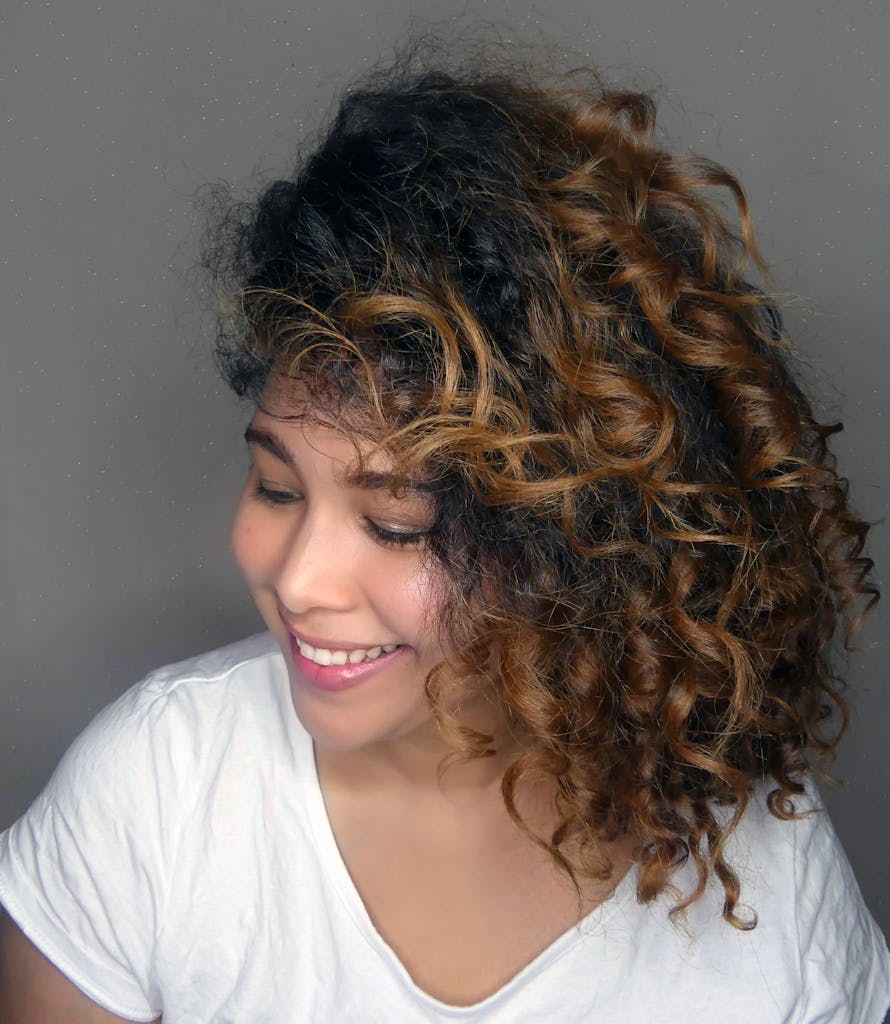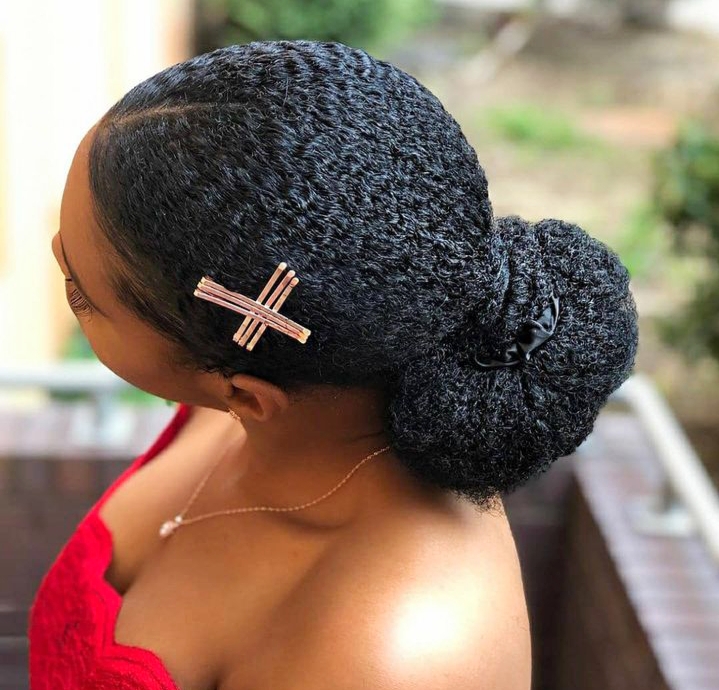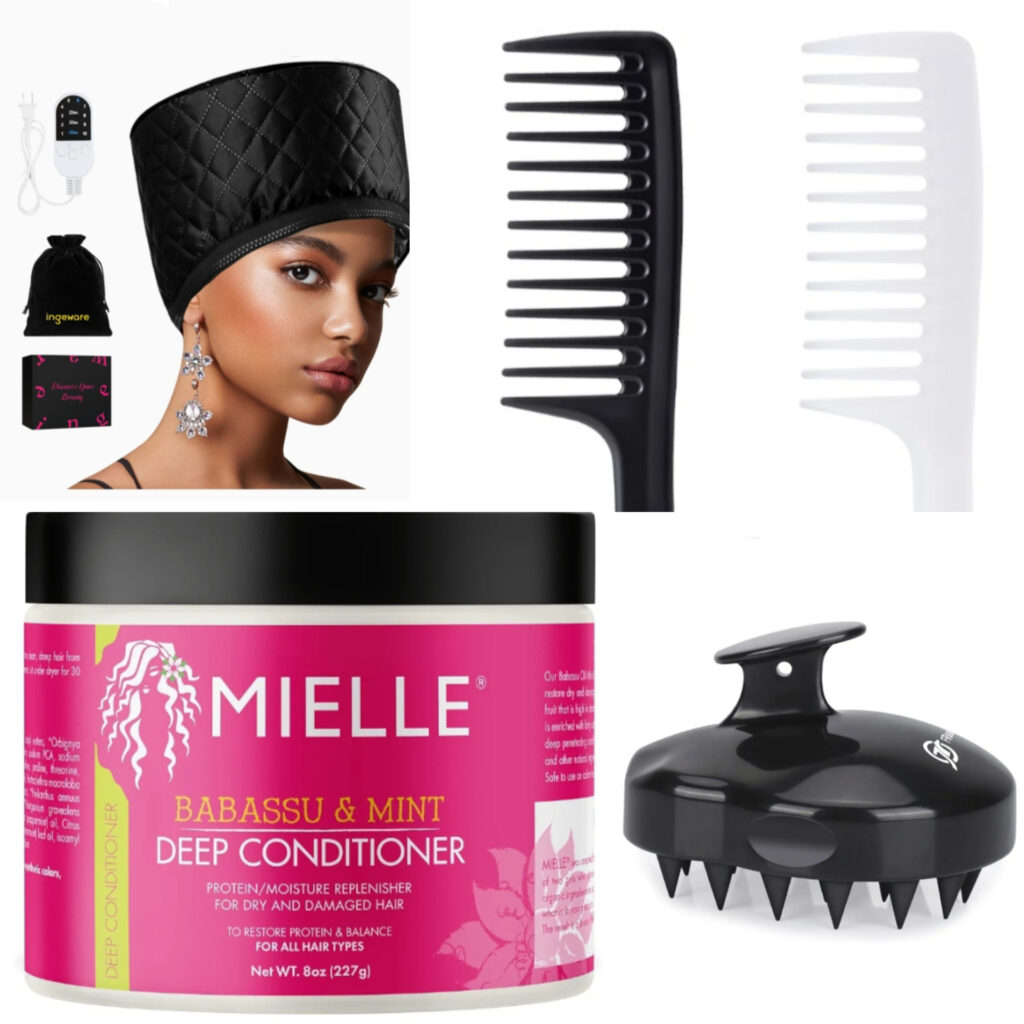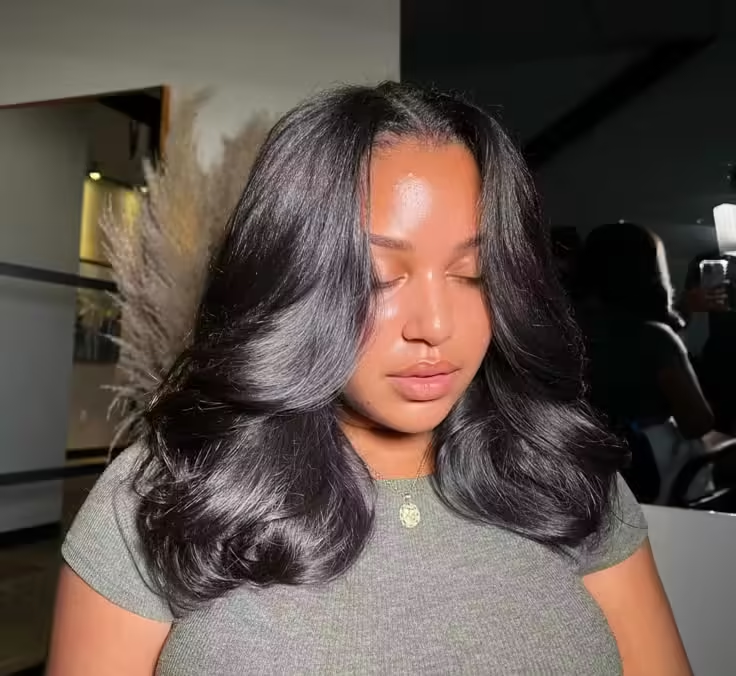Understanding your curl type is the first step to unlocking healthy, beautiful curls. It is as important as the hair products you use, or the techniques you embed in your hair care routine. A good knowledge of your curl pattern makes it easier to make the right decisions in matters that affect your hair.
Identifying your curl pattern can be quite tricky for many people. As a matter of fact, many people have no idea that curl patterns have been classified. If you’re one of these people, you’ve come to the right place!
In this article, I bring you adequate knowledge of what you should know about the different curl patterns and how to identify yours, as well as its usefulness in your curly hair journey. Let’s get into it!
First of all, what are curl types?
Curl types are a classification system used to categorize different patterns and textures of curly hair. A person’s curl type is primarily determined by the shape and pattern of their hair follicles. There are also a few other factors that may affect a person’s curl type, such as genetics, ethnic background, growth, and hormonal changes.
About two decades ago, Andre Walker started a curl typing system that has helped many people with curly hair identify their hair pattern. Many sources suggest that Andre’s system may not accurately identify all hair types. Despite this limitation, it still aids in classifying and categorizing the diverse range of hair types.
What are the different curl types?
As Andre’s system suggested, the different hair types can be classified as straight, wavy, curly, and coily. With straight hair being type 1, wavy being type 2, curly being type 3, and coily hair being type 4. Each curl pattern is also further divided into three subcategories from A-C.
The hairstylist was able to classify the different hair types in order to create a system to accommodate the various hair textures and to pattern a good hair care routine for the known hair types. For this article, we’ll be focusing only on the different curl types being type 2-4.
Type 2- wavy hair

Type 2 hair falls under the wavy hair category. Known for its unique texture and beauty, this hair type falls in between straight and curly hair while remaining neither of each. Type 2 hair grows downwards towards the ground but also has visible bends that signify it is not straight hair. The hair type is further classified into 3 subcategories being:
2A- soft waves
The type 2A wave comes with a loose “S” shape, this wave is less wavier than 2B and 2C. If your wave falls in this category it is important to note that using heavy products can weigh down your hair leading to reduced hair volume.
2B- waves
These waves are a lot more curvy than the type 2A, mimicking the pattern of a regular “S” shape.
2C- waves
Type 2C waves boast a defined ‘S’ shape, shorter and more pronounced than 2A and 2B waves. The waves are also extra voluminous and more prone to frizz.
Type 3 curly hair

Type 3 curly hair falls in between the wavy and coily hair type giving curls that are not as tight as the type 4 hair, but not as loose as the type 2 either. This pattern has a curled up “S” shape with a bouncy texture and is more voluminous because of its curl pattern. It can also have a slightly significant amount of shrinkage meaning that it can look a little bit shorter when dry.
Type 3 hair has three subcategories which are:
3A- soft curls
3A hair has loose but well defined curls with a circumference similar to that of a sidewalk chalk. It typically is in between the S-shaped waves of type 2 hair and the actual curls seen in 3B And 3C. It has more volume than type 2 hair and is more frizz prone.
With type 3A soft curls you’ll need moisturizing as a part of your everyday routine because this hair type is prone to dryness and frizzes out too quickly.
3B- moderate curls
3B is typically classified by tighter and well defined ringlets of hair with a medium circumference. It has more volume than 3A hair as the curls spring out from the scalp. 3B hair stands out for its frizz-prone nature and higher density compared to other hair types. High density means there are more strands of hair per square inch.
Your curls are beautiful, but they encounter difficulties too. This occurs when their thickness is not handled with care, leading to the loss of moisture and resulting in dryness and breakage.
3C- ultra curly
Type 3C hair boasts tight coils resembling corkscrews. With a diameter as thin as a pen, its curls display the most definition among the 3A, 3B, and 3C categories.
This hair type is likely to be fuller and more voluminous, owing to the fact that it is more dense. It shrinks more than the previously mentioned type 3 categories and is more prone to frizz. Due to this, this curl pattern will require frequent moisture.
With a type 3 curl pattern, you may have to moisturize often as this practice helps to curb unnecessary shrinkage as well as dry or frizzy looks.
Type 4- kinky/coily hair

Type 4 hair is widely known as afro or kinky hair. It is characterized by closely packed curls that have a higher level of shrinkage compared to other hair types. Type 4 hair grows up and outward towards the sun and has a lot of bends and curves which make it more prone to frizz. If not properly moisturized, the type 4 is most likely to suffer dryness, breakage, excessive shrinkage, and overall stunted growth.
4A- loose coils
Its coils are tightly joined and closely packed. It has a small diameter but not as small as its 4b and 4c counterparts. 4A curls struggle to maintain their original lengthy appearance due to high shrinkage. It’s prone to dryness but not as much as 4b and 4c.
4B- Zig-zag coils
As the name implies, zigzag! They are just like the 4a hair type but have tighter coils which show a zigzag pattern. Ijt shrinks a lot and is more prone to frizz than type 4 a but not as much as 4c.
If not properly handled, these curls tend to break due to their fragile nature. That being said, moisturizing is key to keeping their locks in shape; otherwise, dryness becomes the prevailing pattern, and we are pretty sure you wouldn’t want that.
4C- Tightly coiled
It’s no coincidence that the 4C comes out last in the hair type category. This hair type is the most packed and has the tightest curls on the chart! Owing to its level of tightness, it has more bends and curves making it more prone to knots, tangles and breakage, as well as leaving channels for moisture to escape the strands.
With this hair type, you’ll likely moisturize as often as you can to avoid your hair dryness, tangles, and knots.
Fun fact: Studies show that every individual stands a chance of getting two, or more curl types on different sections of their head.
How to identify your Curl type?
You’ve finished reading through the different curl types, and now the big question’s probably on your mind; “How do I figure out my hair type?”. This shouldn’t be a worry as we are here to walk you through a few easy steps that will assist you in identifying your curl type. Here they are!
1. Observe
Examining your hair when it sits pretty in its natural state is the way to go. In its dry state look out for the size and pattern of your coils, curls or waves.
Also, the direction at which your hair grows can tell which curl type you have, if it grows downward toward the ground or if it grows upward toward the sun. You wouldn’t want to miss out on checking your shrinkage and frizz level too.
2. Consult the chart
Accepted as the most widely used hair typing system Andre Walker hair chart is the easiest and most recommended way to know your hair type.
3. Check different parts of your head
In its simplicity, this means checking different strands of hair on each section of your head. This helps to know which category they fall in as there is a tendency for an individual to have more than one hair type.
4. Seek professional advice
If you’re still confused about getting to know your hair type, we will recommend you see a professional hair stylist who specializes in curly hair.
Why does identifying your curl type matter?

1. Tailored hair care:
Knowing your curl type makes you engage in hair treatment and routines specifically tailored to your hair type resulting in curls that shine and stand out.
2. Effective styling:
Knowing your curl type gives you an advantage when you are set to styling your crown. You’ll know better as to go for styles that best suit your hair curl type. Yes, that’s the aim!
3. Product selection:
All curl patterns are built differently and as such, require different products with different offers. A good knowledge on your hair type guides you on choosing the right product suitable to deliver the right needs to your specific curl type.
4. Reduced damage
Understanding your hair type empowers you to care for it uniquely. While a treatment designed for type 4C hair might be tempting, knowing you have type 2B curls prevents you from damaging your hair with an unsuitable routine.
Caring for your hair and following the routine suitable for your hair type puts you on a safe guard and reduces your chances of hair breakage, leading to healthier hair overtime.
5. Building confidence
A good knowledge of your curl type helps you to embrace your crown, warding off negative feelings and helping you embrace your beauty and uniqueness. It improves your self esteem and self- acceptance letting you know that regardless of your hair type, when nurtured, you are beautiful.
In conclusion, identifying your curl pattern is key to achieving strong, long, and healthy hair. Don’t forget to observe, consult the chart, check different parts of your head, and seek professional advice to find out your curl type.
Remember that curls differ and as such their hair care routine and products would differ too. Be sure to get products and follow routines catered to your curl pattern as this is key to healthy hair. Know that your curl pattern is unique, and embracing it is key to strong self confidence and a journey of endless healthy strands.
If you enjoyed or gained value reading this article, help share with friends who may need it, leave us a comment, and engage in what you’ve learnt. Looking forward to seeing you in our next post!










Although I don’t have curls ☺️☺️ I really enjoyed every word